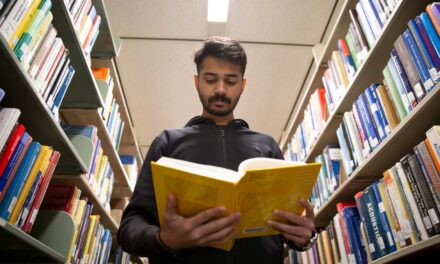
ASU engineering sees millions invested in new equipment
The latest in industry equipment is being integrated into the engineering and manufacturing curriculum in the Fulton Schools Polytechnic campus programs
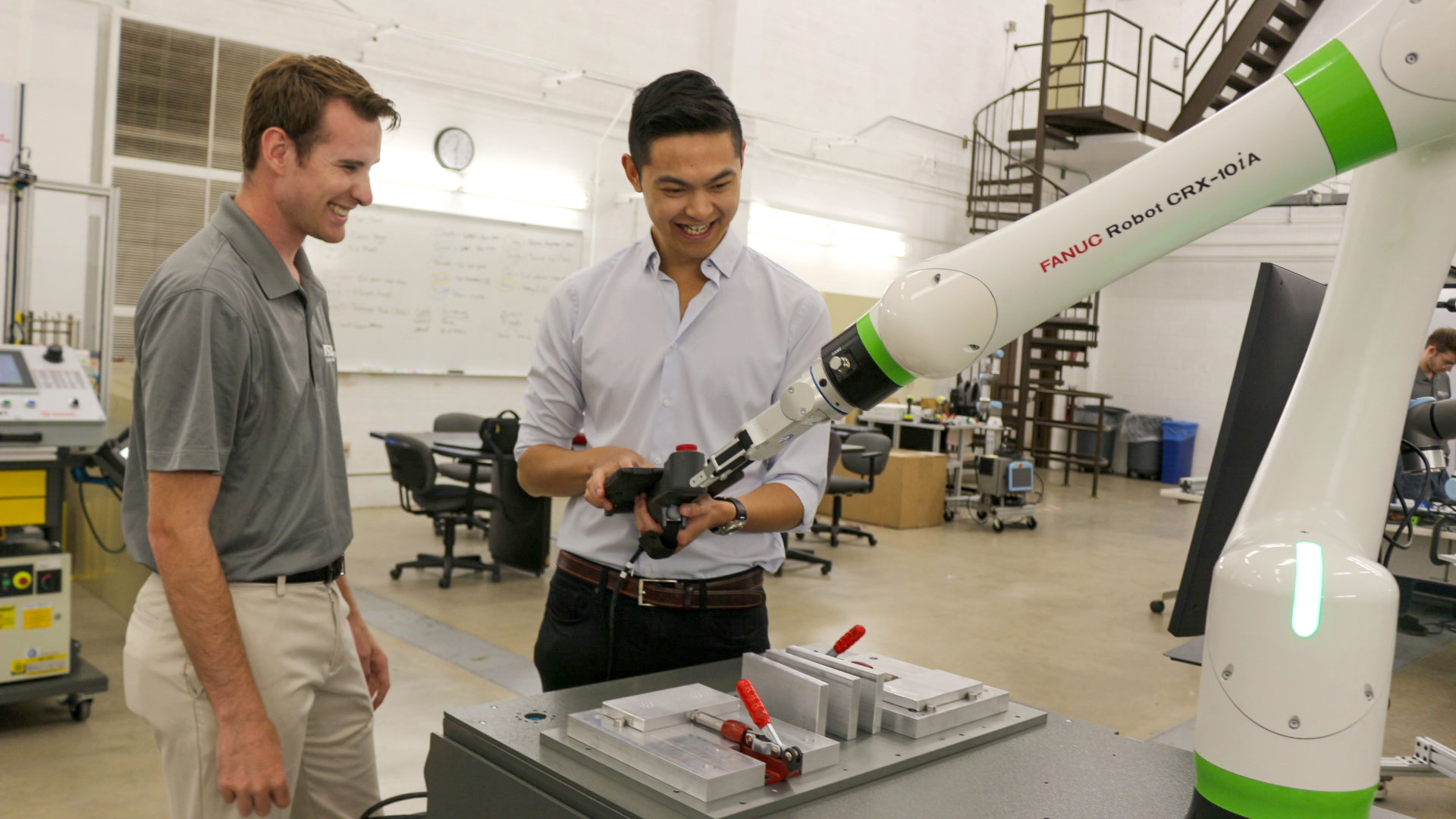
The Polytechnic campus, one of Arizona State University’s five local campuses, has seen immense growth in engineering and manufacturing programs and research opportunities over the past few years. This is partly due to advances happening in the Ira A. Fulton Schools of Engineering, which houses two of its schools — The Polytechnic School and the School of Manufacturing Systems and Networks — on the campus.
The Fulton Schools prioritizes immersive, hands-on learning environments and this rings especially true of the curricula offered at the Polytechnic campus. This pedagogical foundation paired with the campus’ expansion has led to a surge in its broad academic and research capabilities.
New and existing faculty in The Polytechnic School and the School of Manufacturing Systems and Networks are introducing innovative research topics, processes and systems. To adequately train students and prepare them for next-generation engineering and manufacturing, faculty members are acquiring state-of-the-art equipment. Equipping ASU’s labs with the latest technologies lends to both schools’ growing capabilities and, as a result, offers all levels of learners increased opportunities for real-world learning experiences that haven’t been possible until now.
Attaining new equipment is equally a result of local industry engagement and community and governmental support. When industry donates equipment to universities to enhance academic curriculum, they are contributing to training the future workforce. When students learn by training on industry-grade equipment, they can make an even greater impact during their time as students and especially when they begin their careers.
Preparing the next generation of manufacturing engineers
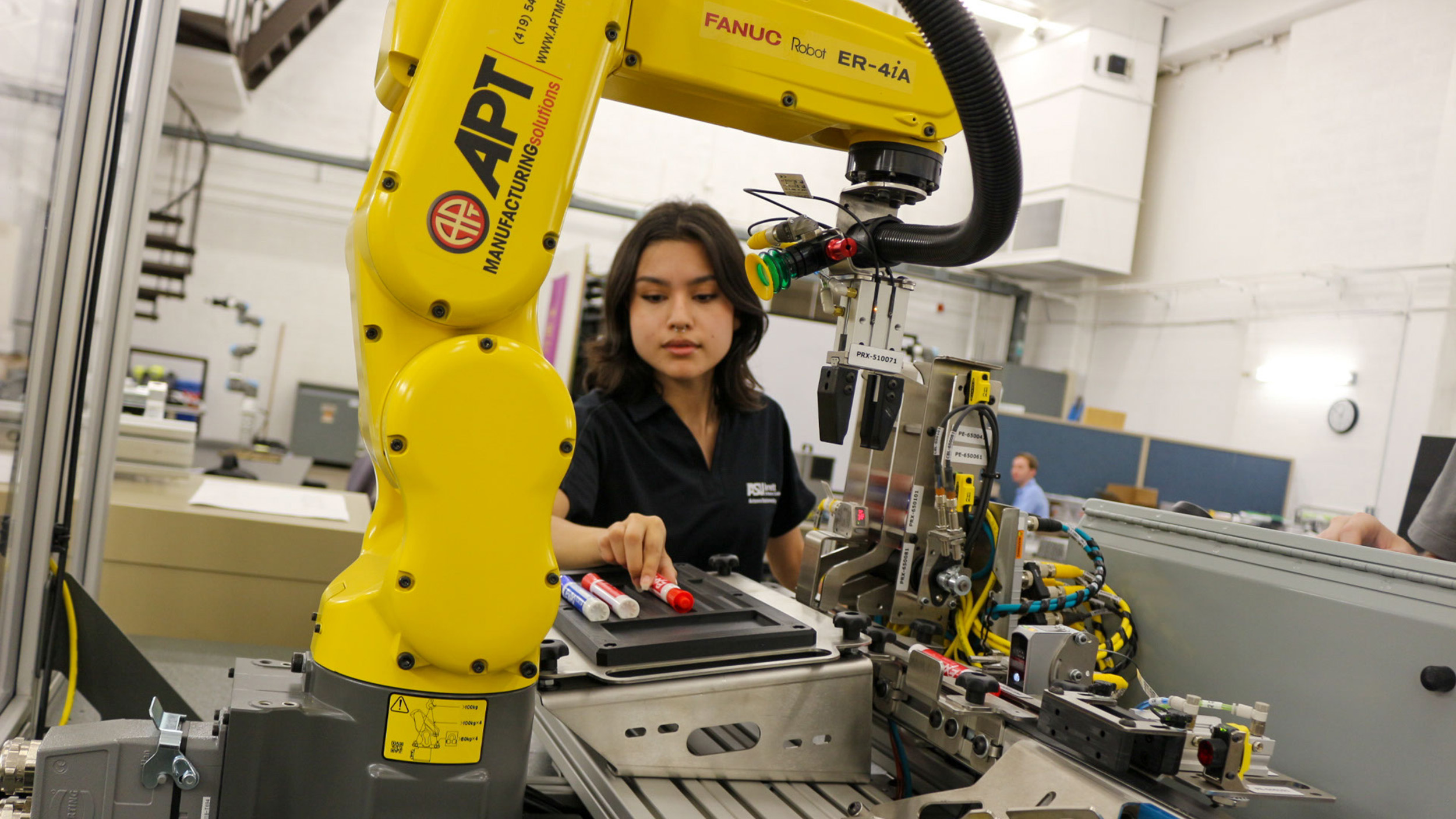
The Simulator Building on ASU’s Polytechnic campus is home to the Fanuc Center of Excellence. The Center houses millions of dollars’ worth of robotics training equipment to skill all levels of manufacturing students and the existing workforce. Photographer: Sona Srinarayana/ASU
Manufacturing capabilities at the Polytechnic campus have grown significantly since the launch of the School of Manufacturing Systems and Networks in August 2022. The school’s mission is to prepare the next generation of engineers, so enhancing and introducing new research pathways and installing lab equipment that makes pioneering research possible, is critical.
The Fanuc Center of Excellence, launching in 2023, is located in the Simulator Building at the Polytechnic campus and will be supported by various industry partners, including FANUC America, Rockwell Automation, APT Manufacturing Solutions, Honeywell Aerospace, Klein Educational Systems and other collaborators that all have the collective goal of skilling ASU students and the existing workforce to tackle new manufacturing demands. The center will house millions of dollars’ worth of robotics equipment and facilitate opportunities in manufacturing research, industry training and education, and community workforce upskilling and reskilling.
Also aligning with the mission to prepare students for an evolving manufacturing industry, the Richard F. Caris Foundation, which has donated about $900,000 to the Fulton Schools since 2018, and the U.S. Department of Labor’s AZNext program, have funded industry-grade training equipment for undergraduate- and graduate-level manufacturing courses and workforce training workshops taught by Associate Teaching Professor Jerry Gintz. This equipment, which includes a series of manufacturing “carts,” will enable him to provide industrial automation technology insights to his students.
Additionally, four Collaborative Certified Education Carts will soon be delivered to the center. They are designed to teach the fundamentals of industrial collaborative robot, or cobot, programming and operation via certification courses available to students and industry professionals. Cobots are intended to safely operate alongside humans in a shared workspace.
Gintz will also soon offer Connected Smart Manufacturing, or CSM, system training to all levels of manufacturing students in the center. The CSM represents a pseudo factory that will “emulate a contemporary manufacturing system, giving students an opportunity to investigate methods of optimization by analyzing production data and applying machine learning algorithms.”
As a precursor to CSM training, Gintz’s students will work with a Fenceless Certified Education Cart, designed to expose them to manufacturing fundamentals, followed by training on the Mechatronics Certified Education Cart, a single workstation designed to teach students about core industrial automation technologies.
“This progressional approach allows students to learn the technology at their own pace without fear of damaging expensive equipment,” says Gintz.
Investigating material characteristics for optimal manufacturing
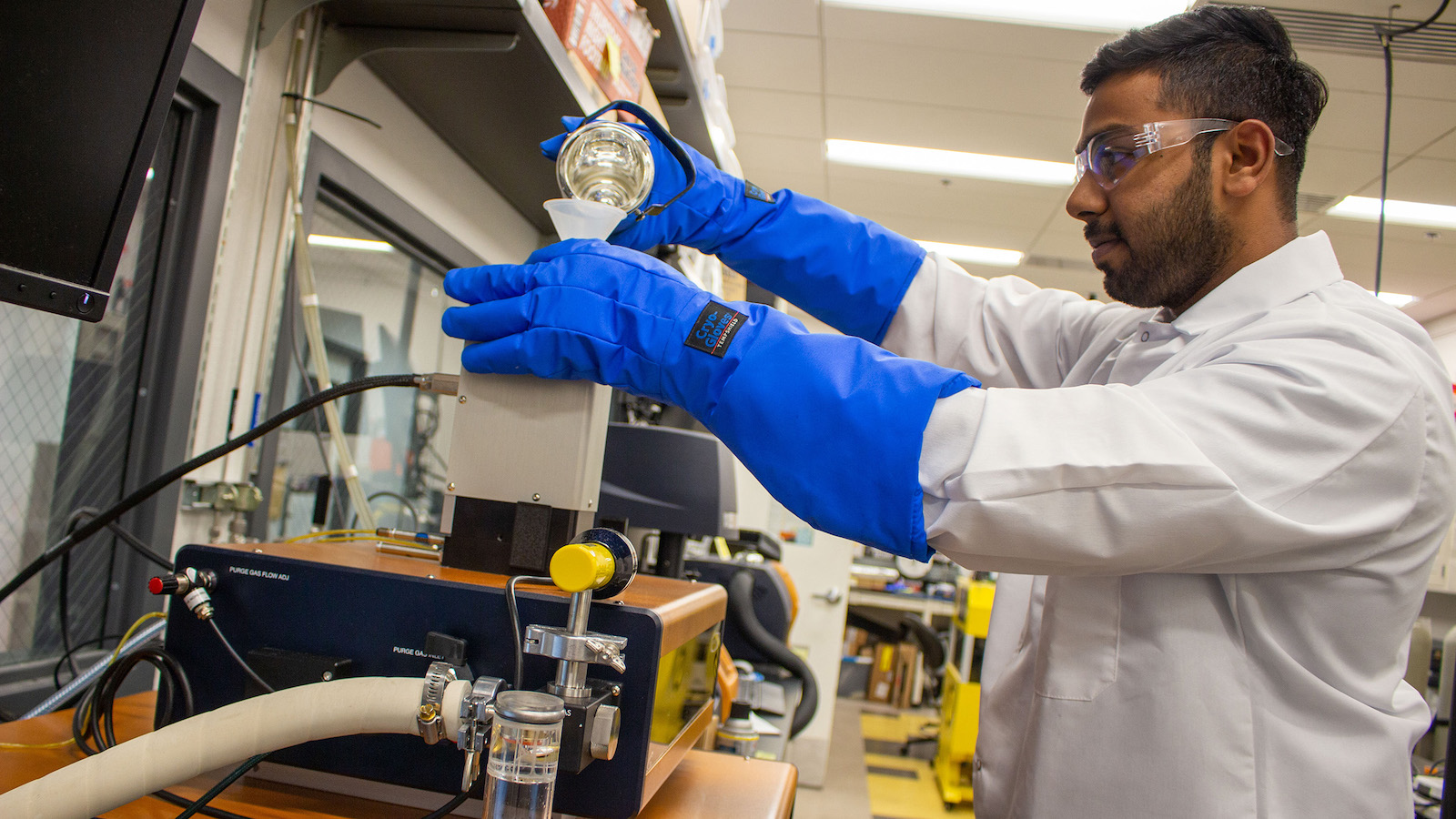
Varunkumar Thippanna, a systems engineering doctoral student, measures the thermal conductivity of materials using the discovery laser flash diffusivity system in the Advanced Materials Advanced Manufacturing Laboratory at ASU’s Polytechnic campus. Photographer: Sona Srinarayana/ASU
Pushing the boundaries of additive manufacturing, or 3D printing, is a critical element of advanced manufacturing and Associate Professor Keng Hsu has dedicated his lab, the Manufacturing Innovation Lab, to exploring its potential.
Hsu and his team of student researchers are currently addressing industry challenges head-on by creating new, accessible 3D printing processes that he says will “improve a product’s geometry, tolerance and feasibility.”
He is also preparing his lab for the installation of binder jet additive manufacturing equipment — a $500,000 Honeywell Aerospace investment into ASU’s manufacturing growth.
“We haven’t had something of this scale since the Innovation Hub launched in 2017,” says Hsu.
Hsu, his student research team and other Fulton Schools researchers will use and advance this binder jet technology to “establish a clear path for industrial adoption of the binder jet technology in producing aerospace components,” says Hsu.
He adds that “Honeywell is vouching for our ability” and that this is the case among many companies who are investing in ASU’s faculty, research and students.
Also new to Hsu’s lab is the high-speed infrared camera, funded by the New Economy Initiative, or NEI, a statewide effort to accelerate talent and skills development in key areas driving industrial and economic growth in Arizona. The camera will enable researchers to see and understand the material-energy interactions that will advance manufacturing processes and materials development.
“The ability to capture very small and fast temperature changes of materials being processed with high spatial resolution is key to unlocking the ability to advance manufacturing technologies and capabilities,” Hsu says.
Running in parallel with Hsu’s research, Associate Professor Ehsan Dehghan-Niri has introduced a new research pathway in the Fulton Schools — nondestructive evaluation and testing, or NDE/T, which uses the latest in ultrasound technology to explore the maintenance and quality control of critical components that are used during the manufacturing process.
Ultrasound testing detects and evaluates anomalies and characterizes material properties, so advancing this technology paves the way for higher-quality products and systems in every sector of manufacturing.
Currently, the NDE/T industry is lacking a skilled workforce and ASU is looking to address this shortage. As a result, Dehghan-Niri received funding from the NEI to purchase an ultrasound testing immersion system — a system that he says is the first of its kind at ASU because of its advanced capabilities.
“Undergraduate students will have the opportunity to learn on this system through research-based projects and graduate students can push research boundaries,” Dehghan-Niri says. “Industry collaborators like General Dynamics, Intel, Honeywell, Boeing, Virgin Galactic, Northop Grumman, Lockheed Martin and more will be able to collaborate with the Fulton Schools on NDE/T advancements. Although small, this sector impacts all of manufacturing.”
“We can’t manufacture things and not know how they behave,” says Dhruv Bhate, associate professor and the chair of manufacturing engineering programs in the School of Manufacturing Systems and Networks. “We want to understand material properties of the parts we make before we put them into production. Several faculty members including Keng, Ehsan and Kenan are characterizing the materials that go into manufacturing equipment for this purpose.”
Kenan Song is also taking a deep dive into the characteristics of manufacturing materials and recently received a discovery laser flash diffusivity system funded by the U.S. Office of Naval Research Defense University Research Instrumentation Program, or DURIP.
Song’s Lab, the Advanced Materials Advanced Manufacturing Laboratory, or AMAML, is home to the discovery laser flash diffusivity system that helps measure materials’ thermal conductivity specifically for aerospace applications to advance hypersonic missiles or the leading edge on an airplane wing for example.
Also in the AMAML is the ARES-G2 — the “most advanced rotational rheometer for research and material development” that allows for measurement of the polymers, composites, solutions, gels and inks that are used in 3D printing to advance the automotive, aerospace, defense, national security and biomedical fields.
Song and other faculty members in the School of Manufacturing Systems and Networks are also working to install a scanning electron microscope, which is partially supported by funds from the Caris Foundation. The microscope will enable high-resolution imaging and characterization of materials and generate datasets for use in machine-learning-driven materials discovery.
Advancing human-robot collaboration
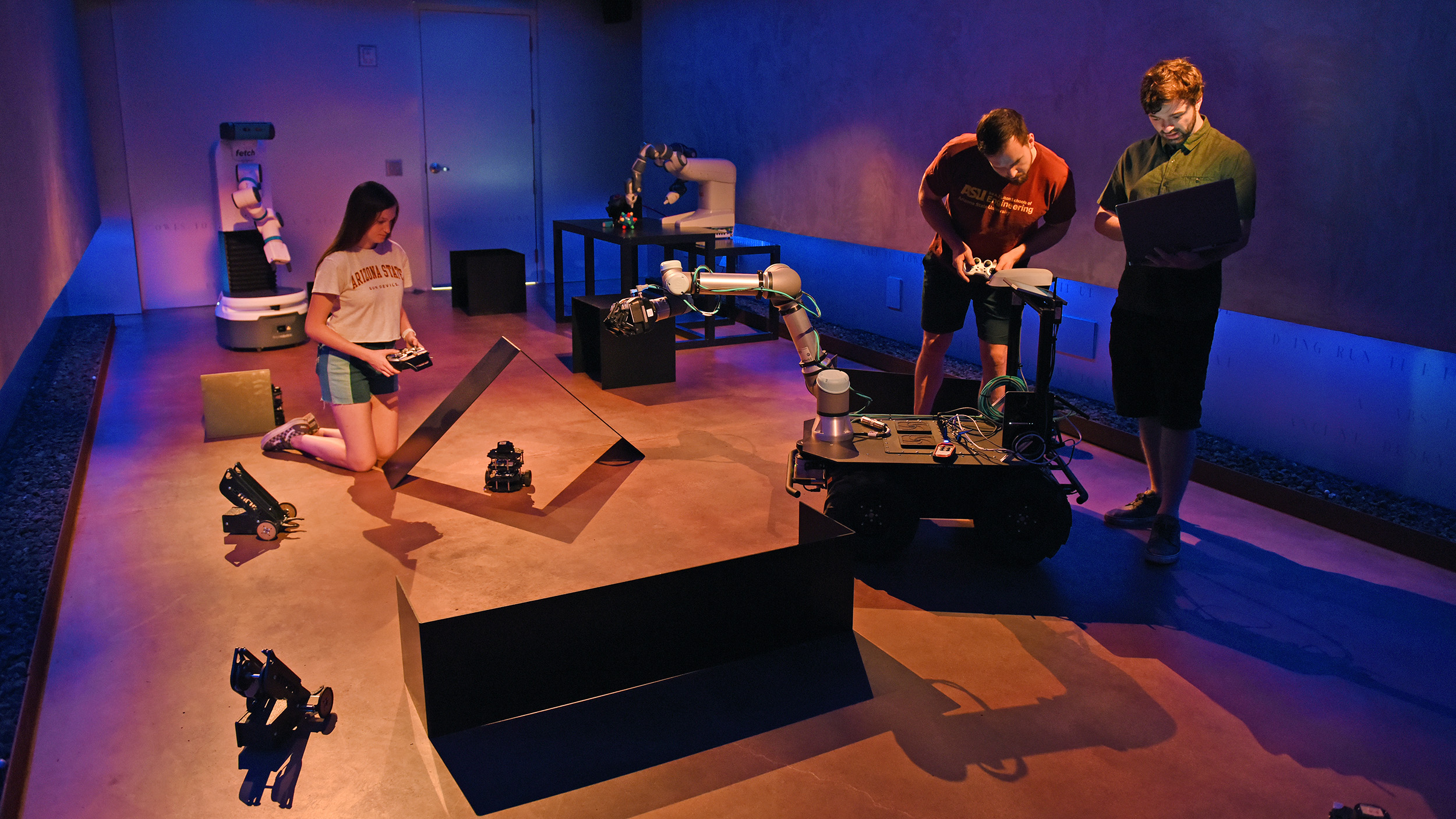
Robots Husky, Fetch, YuMi and a family of swarm robots are located in the GHOST Lab at ASU’s Polytechnic campus. The space can vary its lighting from red to blue and various shades in between to increase the realism of experiments done in space and evoke emotion in the human participants by simulating different environments, such as Mars, water, swamp or jungle. The GHOST Lab is also equipped with sounds, including space chatter samples, publicly available via NASA. The creative concept for the GHOST Lab was designed by Lance Gharavi, a professor in the School of Music, Dance and Theatre and other faculty in the Herberger Institute for Design and the Arts at ASU. The lighting was designed by William Kirkham, assistant professor in ASU’s School of Music, Dance and Theatre under Gharavi’s direction, and the sound was designed by Max Bernstein, assistant clinical professor in the Sidney Poitier New American Film School a school in the Herberger Institute for Design and the Arts at ASU. Photographer: Tim Trumble/ASU
Various Fulton Schools faculty at the Polytechnic campus are working to advance robotics research, including Nancy Cooke, a professor in the human systems engineering program at The Polytechnic School and director of the Center for Human, AI, and Robot Teaming, or CHART.
She recently received a DURIP grant to purchase a collection of robots — Husky, Fetch and YuMi that will advance human-robot teaming in a variety of environments. This collection of robots lives in the General Human Operation of Systems as Teams, or GHOST, Lab at the Polytechnic campus — a lab that is part of CHART.
Husky can transport large objects and travel across rough terrain. In one experiment, it stands in for a Mars Rover. Fetch helps its human counterparts by lifting heavy objects high in the air or retrieving items from top shelves, while YuMi has manipulation skills such as building things out of LEGO bricks which can be translated into tasks like bomb diffusion. Cooke also used DURIP funding to purchase swarm robots that extend the scope of human capabilities during search and rescue missions.
In addition to a family of robots, the GHOST Lab is also home to an OptiTrack Primex 13W motion capture camera system, or MOCAP, that allows lab members to accurately study increasingly complex human-robot and robot-robot interactions as well as a motion capture suit that is specifically designed to track human motion.
“The MOCAP is one of the best ways to accurately sense and localize objects in 3D space, which allows us to coordinate movements of many robots simultaneously, even within the presence of a human,” says Mason Smith, a systems engineering doctoral student in the ASU Robotics and Intelligent Systems, or ASU RISE, Lab led by Associate Professor Wenlong Zhang.
Zhang, who is a faculty member in the School of Manufacturing Systems and Networks, also pushes the boundaries of the GHOST Lab by carrying out his own research pertaining to the design of novel algorithms to enable robots to safely and efficiently collaborate with humans via wearable assistive robots, soft robots and unmanned aerial vehicles.
The future of automotive engineering starts here
Many electric vehicle manufacturers have begun operations in Arizona presenting new research and collaboration opportunities for ASU faculty and students, including Assistant Professor Junfeng Zhao who has an industry background in automotive engineering.
Zhao conducts his research in the Battery Electric and Intelligent Vehicle (BELIV) Lab at the Polytechnic campus and soon his lab is set to welcome a new piece of equipment — a fully instrumented autonomous vehicle platform that will be used to research the safety of autonomous driving, electric vehicles and intelligent transportation. Zhao and his research team will prioritize the development of an operational safety assessment, or OSA, method to address a critical gap in public safety related to automated vehicles.
“Whether the autonomous vehicle is commercially deployed or is a prototype being tested on public roads, the operational safety is unknown and this presents a significant risk to public safety and one that had tragic consequences with the Uber incident that killed a pedestrian near the ASU campus in 2018,” Zhao says.
This vehicle platform has the potential to boost ASU’s research and education in electric and autonomous vehicles, contributing to a growing local economy and workforce preparation in this field.
Workforce development is also a priority for Assistant Professor Yan Chen who has been collaborating with General Motors since 2018. His lab, the Dynamic Systems and Control Lab, recently received an equipment donation from GM to enhance his lab’s research and education of vehicle dynamics modeling, simulation and control.
This new equipment made by dSPACE and MathWorks will be used to achieve real-time vehicle dynamics control and hardware-in-the-loop simulation.
“The control algorithm and skills developed from the simulation and experiments will help students start their careers in autonomous driving, vehicle dynamics and control and modeling and simulation of vehicular systems,” Yan says.
Ao Li, a doctoral candidate studying mechanical engineering, received first-hand workforce experience under Yan’s and GM’s workforce development strategy. Li interned at GM, where he worked on a GM Bolt via an NSF-GOALI project about modeling and control algorithms of tire blowout for partially- and highly-automated vehicles.
Yan says that through the collaboration, “more than 10 GM internal reports were created, one patent was applied and multiple research papers were published.”
State-of-the-art drone supports aviation program
The aviation program is one of the most highly enrolled programs in The Polytechnic School. A large drone called the Aurelia X6 Hexacopter, is the newest piece of equipment to support research and future development in the unmanned aerial systems, or UAS, degree program.
The drone will be integrated into UAS curriculum, offering new students a platform to explore and existing students hands-on experience with sensors and payloads so they are prepared to innovate toward new industry demands.
Lukas Severinghaus, an engineering student concentrating in robotics, and Audrey Schlichting, a mechanical engineering systems and professional flight student — both students in Barrett, The Honors College — were the first students to explore the capabilities of the drone.
Using the drone’s technology, they developed an autonomously guided parachute delivery system for humanitarian aviation applications that provides a safer, lower-cost solution to dangerous air drops to provide life-saving aid when there isn’t a runway or infrastructure in place. The purchase of this drone enabled Severinghaus and Schlichting to perform realistic drop tests of their vehicle at high altitudes, mimicking deployment from a manned aircraft.
“This project enabled us to interact and collaborate with humanitarian organizations from all over the world to solve a global crisis,” Schlichting says. “ASU has given us the funds and material resources to give our time and talents to those who need it most. We are so grateful for this opportunity from ASU to do this project.”

Audrey Schlichting, a mechanical engineering systems and professional flight student, participates in a test flight of Manna, an autonomously guided parachute delivery system, at Gilbert Regional Park. Photographer: Kurt Paterson/ASU
















